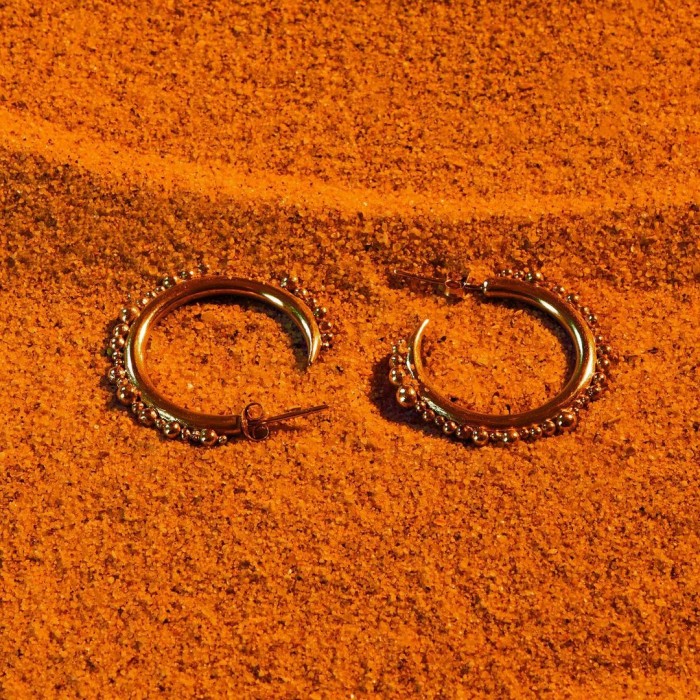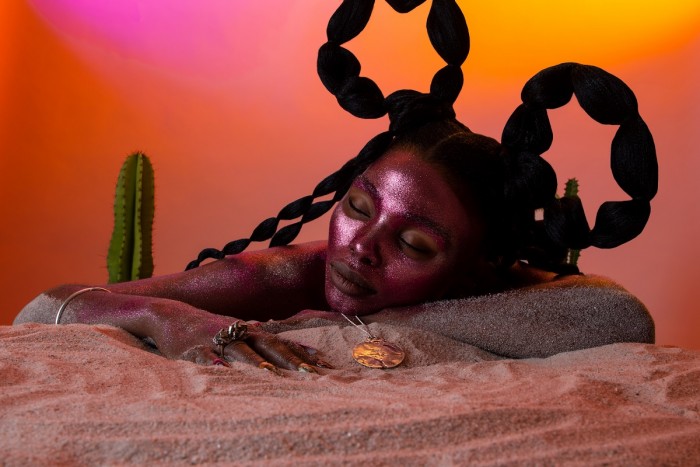Design Indaba Emerging Creative Tshepiso Lekganyane has found her passion at the intersection of fashion and art
Fine art graduate and jewellery designer Tshepiso Lekganyane is the founder and metalsmith of Tshepiso Jewellery. Following her graduation from the University of the Witwatersrand, Lekganyane studied at Alchimia Contemporary Jewellery School in Florence and, upon returning to South Africa, she started her own jewellery brand that has since been featured in Vogue, VISI and Bubblegum Club.
In this interview, the Design Indaba Emerging Creative tells Design Indaba what sparked her move to jewellery design, the importance of gender-fluid pieces and how the mundane inspires her creations.
1.After studying fine art at Wits, you went on to study at Alchimia Contemporary Jewellery School in Florence – what inspired this move from art to jewellery design and what made you decide to study in Florence?
I found myself quite burnt out and a little bit directionless after I had completed my fine arts degree, and there was also this gnawing feeling throughout my studies of not really fitting in. I became rather disenchanted with Johannesburg and wanted to move away to study something else in the creative sphere. Growing up I initially wanted to be a fashion designer, so when I came across this course, it felt like kismet – it was this wonderful coalesce of fashion and art with the chance to learn new skills.
2.Your debut collection challenges gender-specific designs. How do you approach designing gender-fluid jewellery and why is this important to you?
The discussion around gender is one I cannot succinctly answer here, but what I can and have been seeking to do is create pieces that are wearable regardless of gender. My debut was a mix of feminine and masculine elements, outside the realm of fast-fashion jewellery and imported brands where it’s hard to find gender-neutral jewellery. Gender-fluid jewellery is important because it’s a guiding hand to question gender norms and hopefully embrace all identities. It’ll always be difficult in this country due to a myriad of issues, but a start is always good.
3.What are some of your career highlights to date?
Very cliché, but one of my best highlights was the first purchase someone made from my website. It was pure glee and excitement for me. I then got feedback on how much they loved their new piece and that felt like a nudge to keep on going.
4.What does it mean to you to be chosen as one of Design Indaba’s Emerging Creatives for 2022?
I was somewhat surprised to have been chosen – I entered at the last minute and had no expectations! It’s a lovely accolade and I can only hope that it’s the beginning of what else is to come.
5.Who or what are your biggest design inspirations and why?
My work is quite heavily influenced by texture, experimentation and playing with proportions. I find inspiration all around, a lot of it is from mundane objects that I borrow elements from and envision on a body. I don’t have different collections, as each piece is a continuous conversation with the next, so I’m always able to build and borrow from earlier pieces.
6.What advice do you have for any people looking to study jewellery design or start a jewellery brand?
I don’t think I’m experienced or know enough to give out advice – I don’t really know what I’m doing! I’m figuring everything out as I go. I quite impulsively left the country to go study something I had zero experience in, and my brand was not something I had anticipated starting at all. Everything has sort of been a leap of faith and following my gut.
7.If you could pick one staple piece of jewellery to wear – rings, necklaces, earrings etc – what would it be?
Ironically enough, I don’t really wear any jewellery most of the time – my hands are always filthy so the last thing I want to do is get my jewellery filthy or damage it whilst working. When I’m not working, my favourite pieces to wear are ear cuffs, they’re the earring’s edgier sibling.
8.What are you working on currently?
I’m working on several things, including a fair amount of experimenting with new shapes and body fits. But mainly getting stock prepared to send to stockists; it’s been quite an unexpected and weird year for me.


| SOURCE: designindaba.com |
